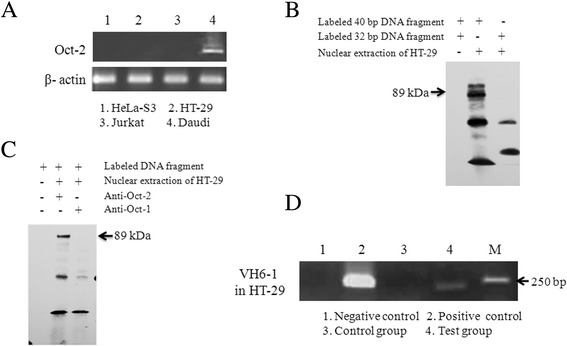Figure 4.

Oct-1 but not Oct-2 binds to the octamer element. (A) Oct-2 was not detected in epithelial cancer cells by RT-PCR. (B) The EMSA assay for octamer motif binding factors located in the promoter region of VH6-1 in HT-29 cells. The 40-bp DNA fragment was derived from upstream of the VH6-1 gene and contains the octamer motif, while the 32-bp DNA fragment was derived from the 40-bp DNA fragment with an 8-bp deletion in the octamer motif. (C) The super-shift assay for octamer motif binding factors with the addition of an anti-Oct-1 or anti-Oct-2 antibody in the binding reaction system. The results are representative of three independent experiments. EMSA, electrophoretic mobility shift assay. (D) The Oct-1 binding DNA fragment of the VH6-1 promoter was amplified via Chip-related PCR. Negative control: no template in the PCR reaction system; positive control: the sonicated chromatin fragments of the cells were used as the PCR template; control group: no antibody added to the IP system; test group: dilutions of IP were used as templates for PCR to amplify the Oct-1 binding DNA sequence. The results are representative of three independent experiments.
